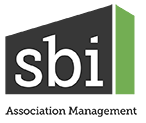For most board members the job description is clear: they have a responsibility to serve as a community ambassador, advocating for the organization while cultivating relationships with stakeholders. However, some boards fail to make that important connection with their members and other supporters. They tend to get lost in the logistics and financial challenges they face and lose sight of the people they are there to serve. This can be detrimental to nonprofit associations because the primary focus of the board needs to remain on the members they are serving as well as those who are financial contributors.
Nonprofit association board members must identify and engage with the people in the community that care deeply about their efforts and can help achieve the goals of the organization. This involves reaching out to individuals, businesses, or groups that share a common interest and developing a respectful and trusting relationship with them. It is essential that the board be actively engaged with stakeholders as these are the members, volunteers, and sponsors who make the day-to-day workings of the organization possible.
In order to build strong relationships with members and other stakeholders, it is critical that boards take their ideas and suggestions into consideration. Board members need to spend time talking with and listening to their members. After all, they are the reason for the organization. All too often board members make decisions without ever consulting their members or sponsors, even though their decisions will directly affect them. This can lead to frustration, lack of support, and ultimately a decline in membership. On the other hand, boards that reach out to members and other stakeholders and involve them in decisions and problem-solving tend to build stronger relationships and make better decisions that have a positive impact on the organization as a whole.
It is vital that boards prioritize and focus on outreach efforts to their members and other supporters. They need to know how their contributions and efforts are making a difference, that their voices are being heard, and that their needs are being met. Boards that have a connection with their volunteers, members, and other contributors are going to be more successful at achieving their goals. Collaborative efforts and programs will reach more people and build more resources than any board can on their own.




